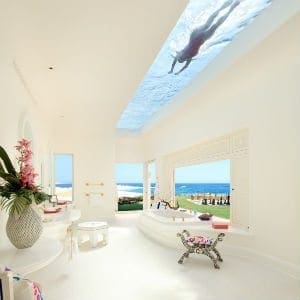
CBRE Hotels and Research has released a ViewPoint report analyzing the latest trends in the Japanese hotel market.
Property market
Hotel property transaction volume[i] reached JPY 325.2 billion in 2015, more than three times that of 2012. The transaction value per key also doubled during this period as the market enjoyed a continued increase in both transaction volume and value. In parallel with this trend, expected yields have also been falling. In Q1 2009, CBRE Research’s Quarterly Real Estate Investment Survey revealed that hotel yield was as much as 2.83 percentage points (ppts) higher than office, but in the most recent survey (July 2016), this gap had shrunk to 1.3 ppts. Meanwhile, the investment market for hotel remains dominated by a handful of major players; the top five buyers’ share of transactions increased from 46% in 2012 to 68% in 2015.
New hotel development and supply-demand balance
New hotel development is accelerating against the backdrop of brisk sales transactions and an increasing number of foreigners visiting Japan. Taking into consideration the plans that have been submitted for building confirmation and the current market momentum, CBRE forecasts an increase of around 20-30% in stock in both Tokyo and Osaka by 2018.
Should the government’s target of 40 million inbound tourists by 2020 be realized, incremental demand is forecast to exceed incremental supply for both Tokyo and Osaka. Tokyo, in particular, would likely suffer from acute room shortage. Meanwhile, if the number of inbound tourists in 2020 only reaches 30 million, CBRE anticipates that Osaka may see incremental demand fall short of incremental supply by 3,000-4,000 rooms, although the supply-demand balance in Tokyo should largely remain as tight as in 2015.
Naoki Yoshiyama, Senior Director of CBRE Hotels, commented, “in Osaka, soaring prices and the lack of availability have prompted tourists and business travelers to either stay outside the city or give up on arranging the accommodation. However, with the increased supply from new development projects, such demand is expected to revert to Osaka city center. This will ensure that the surplus of 3,000-4,000 rooms will be comfortably absorbed.”
Sales market outlook
The number of rooms sold between 2012 and 2014 recorded an annual average of 3,588, which is less than 3% of total stock. In the past, hotels were developed on the basis that they would continue to be owned by the developer, which resulted in limited sales. However, many developments are now being carried out with plans to sell to J-REITs or other investors either immediately after the completion, or once occupancy has stabilized.
As aforementioned, new supply would add 20-30% to the existing hotel stock in Tokyo and Osaka by 2018. Assuming just 10% of the new supply were to be sold, hotel sales transactions would double. With the emergence of additional hospitality J-REITs and/or the market entry of new institutional investors, there will continue to be new sources of investment demand. CBRE believes that Japan’s hotel property market will continue to expand, supported by increased liquidity.
Transaction volume* and transaction value per key

Source: CBRE, July 2016
* CBRE survey, excluding related-party sale/purchase transactions between J-REITs and their sponsors
Supply-demand analysis based on the scenario of 40 million foreign visitors in 2020

Source: CBRE, July 2016

Source: CBRE, July 2016
[i] CBRE survey, excluding related-party sale/purchase transactions between J-REITs and their sponsors
















